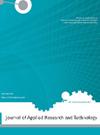Health assessment of welding by-products in a linear welding automation: Temperature and smoke concentration measurements
Q3 Engineering
Journal of Applied Research and Technology
Pub Date : 2024-02-29
DOI:10.22201/icat.24486736e.2024.22.1.2206
引用次数: 0
Abstract
Due to its potential to improve production and weld quality, automated welding systems are growing in popularity in industrial applications. However, these technologies generate potentially dangerous by-products like welding gases and fumes. By evaluating the temperature range and smoke concentration near the welding area, this study intends to assess the health parameters of welding by-products in linear welding automation. A four-wheeled robot system equipped with joint detection and referencing technologies will be the research subject, which will also improve welding conditions to match industrial standards. Also, the study will look into how welding factors affect smoke concentration and temperature range. The findings of this study will shed light on the health risks posed by automated welding systems and guide the creation of safety regulations that will shield workers from hazardous consequences.线性焊接自动化系统中焊接副产品的健康评估:温度和烟雾浓度测量
由于自动焊接系统具有提高产量和焊接质量的潜力,因此在工业应用中越来越受欢迎。然而,这些技术会产生潜在危险的副产品,如焊接气体和烟雾。通过评估焊接区域附近的温度范围和烟雾浓度,本研究旨在评估线性焊接自动化中焊接副产品的健康参数。研究对象将是配备接头检测和参照技术的四轮机器人系统,该系统还将改善焊接条件,使其符合工业标准。此外,研究还将探讨焊接因素如何影响烟雾浓度和温度范围。这项研究的结果将揭示自动焊接系统带来的健康风险,并指导安全法规的制定,使工人免受危险后果的影响。
本文章由计算机程序翻译,如有差异,请以英文原文为准。
求助全文
约1分钟内获得全文
求助全文
来源期刊

Journal of Applied Research and Technology
工程技术-工程:电子与电气
CiteScore
1.50
自引率
0.00%
发文量
0
审稿时长
6-12 weeks
期刊介绍:
The Journal of Applied Research and Technology (JART) is a bimonthly open access journal that publishes papers on innovative applications, development of new technologies and efficient solutions in engineering, computing and scientific research. JART publishes manuscripts describing original research, with significant results based on experimental, theoretical and numerical work.
The journal does not charge for submission, processing, publication of manuscripts or for color reproduction of photographs.
JART classifies research into the following main fields:
-Material Science:
Biomaterials, carbon, ceramics, composite, metals, polymers, thin films, functional materials and semiconductors.
-Computer Science:
Computer graphics and visualization, programming, human-computer interaction, neural networks, image processing and software engineering.
-Industrial Engineering:
Operations research, systems engineering, management science, complex systems and cybernetics applications and information technologies
-Electronic Engineering:
Solid-state physics, radio engineering, telecommunications, control systems, signal processing, power electronics, electronic devices and circuits and automation.
-Instrumentation engineering and science:
Measurement devices (pressure, temperature, flow, voltage, frequency etc.), precision engineering, medical devices, instrumentation for education (devices and software), sensor technology, mechatronics and robotics.
 求助内容:
求助内容: 应助结果提醒方式:
应助结果提醒方式:


